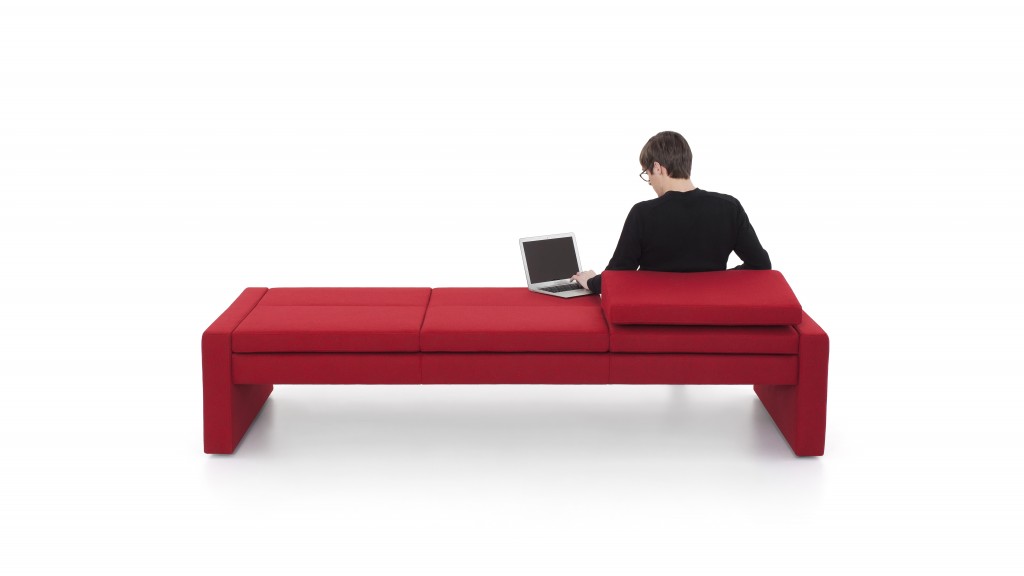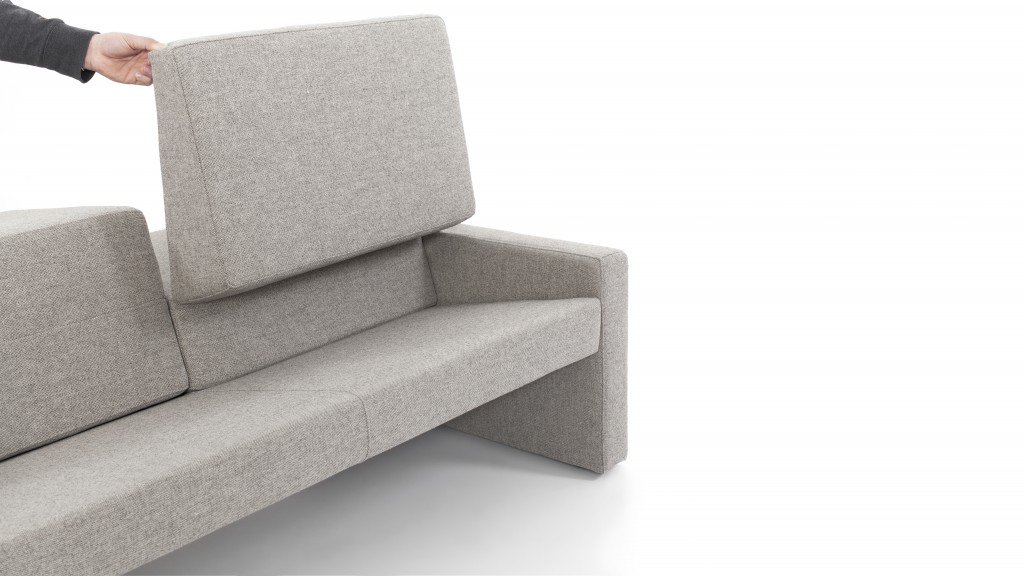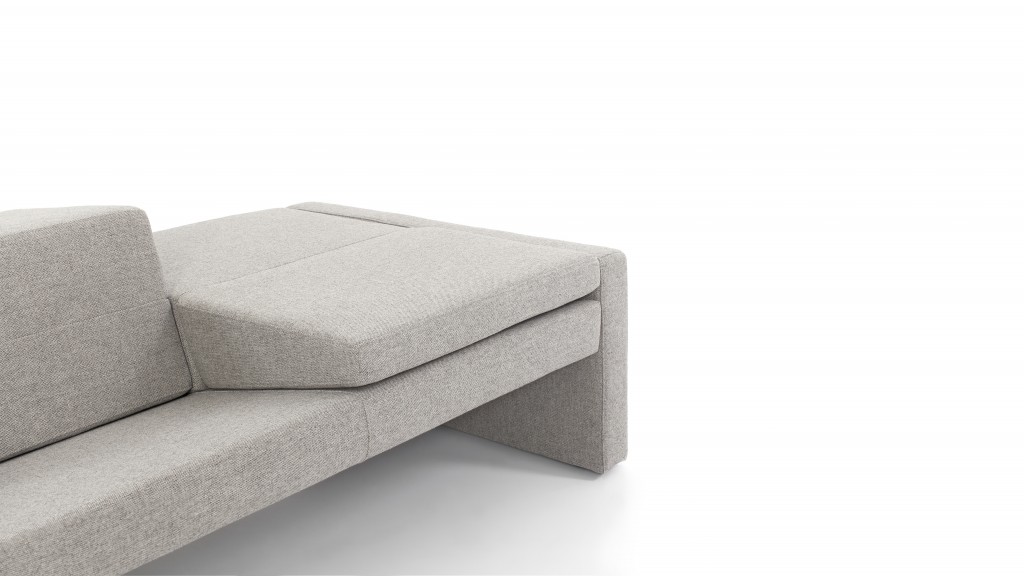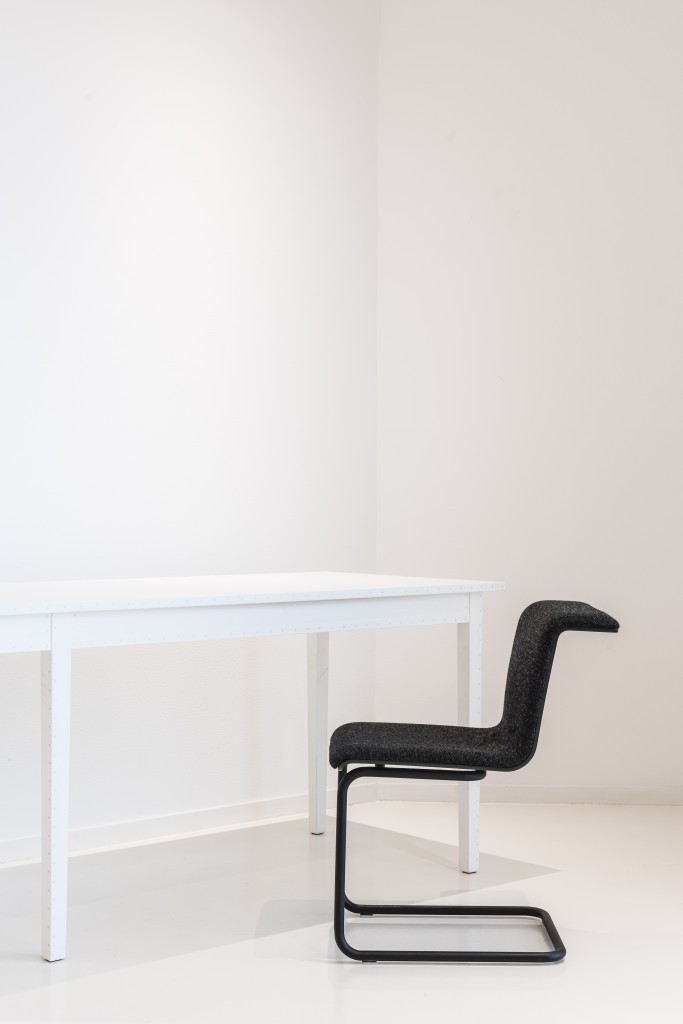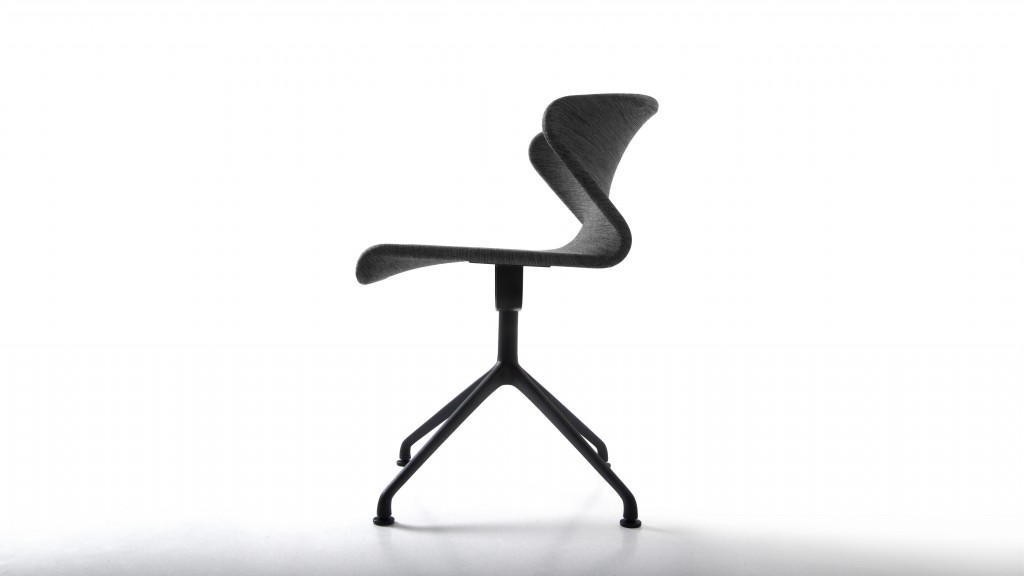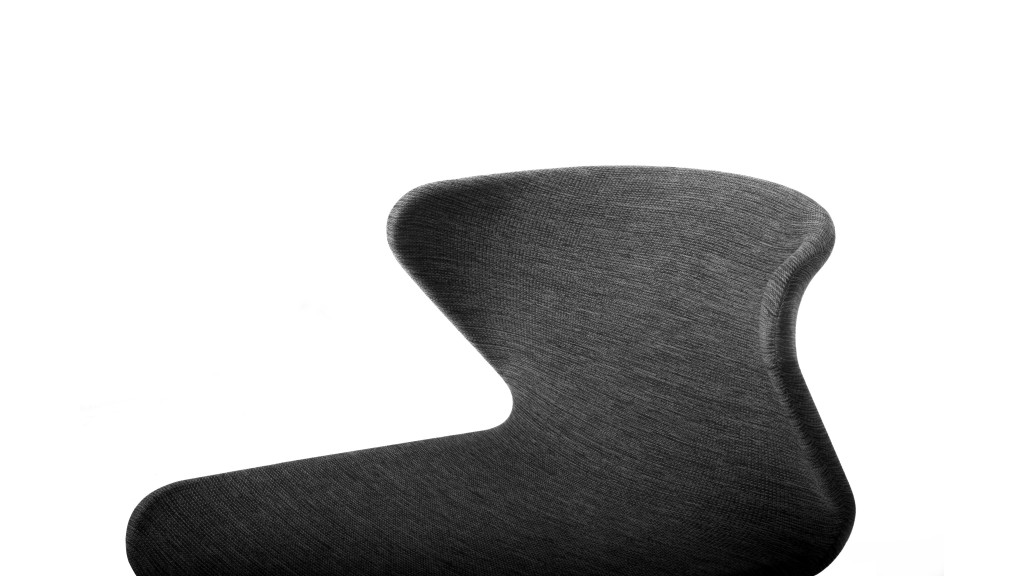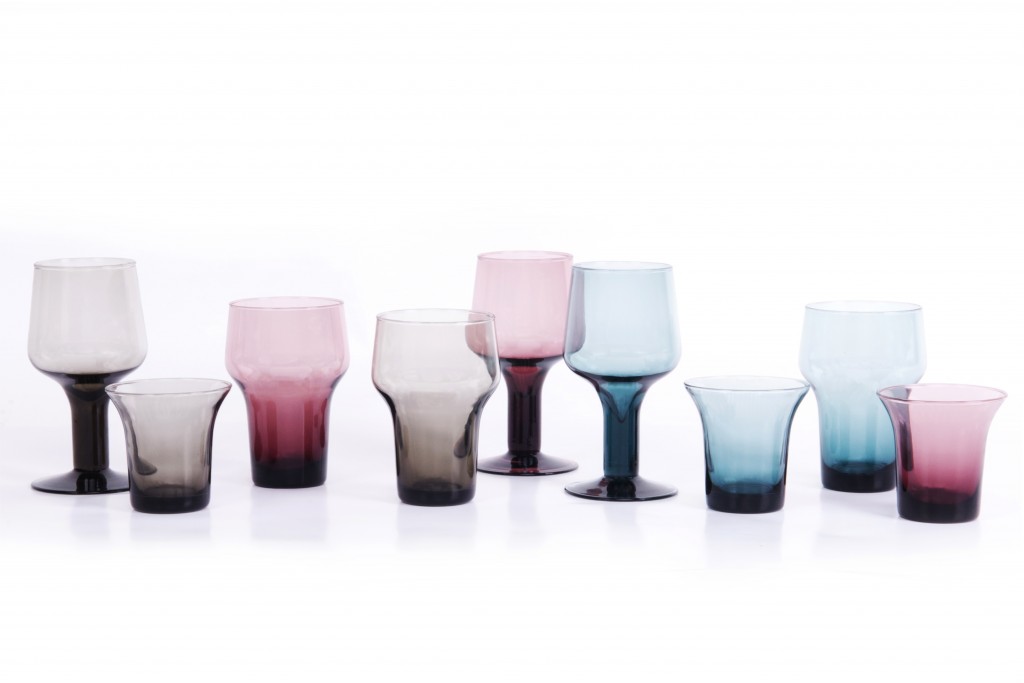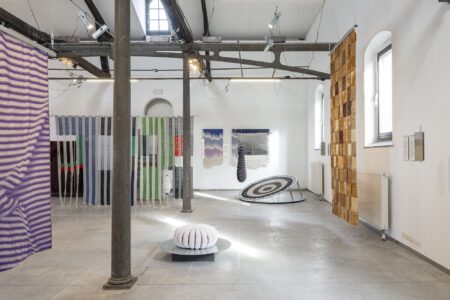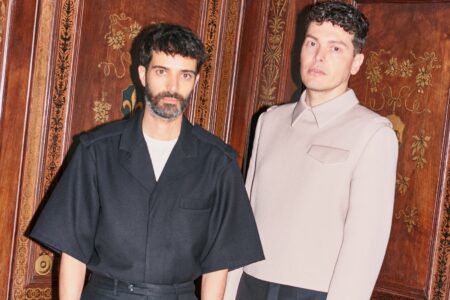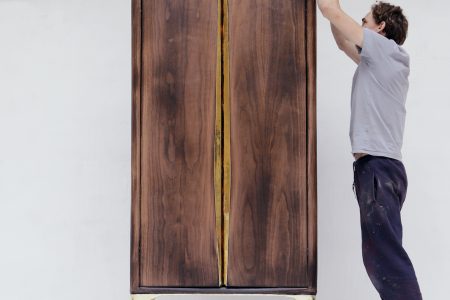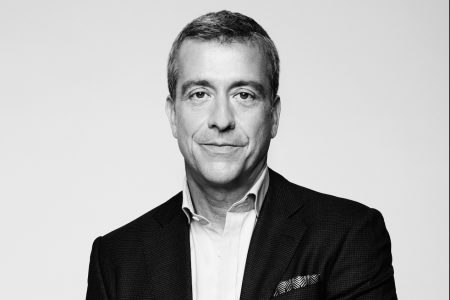Alain Berteau: Objekten Systems on M&O Paris
A few days before Paris Maison & Objet, where several new items he created for his own brand, Objekten Systems, as well as for Belgian company XLBloom, will be exhibited, Berteau welcomed us to his Brussels studio.
Located inside an old water tower on the border of the Bois de la Cambre, Berteau’s design studio inspiring site is the reflection of the man: essentially minimal and poetic.
TLmag: In 2006, you were named Designer of the Year. Was this recognition a determining factor in your subsequent career?
Alain Berteau: Yes of course. Firstly, because I was the first to receive this recognition. I have always considered myself as an outsider in the sector.. I don’t think anyone expected me to win. And it came at a good moment. For two years, I had been sailing along on the success of the TAB chair I designed for Bulo, which had earned me a lot of media coverage. Nothing could have been more helpful for me than being launched by a well-known brand on the basis of a flagship product that, since then, has become a classic of Belgian design.
TLmag: When designing this type of product, is it immediately apparent that it will become a future classic?
AB: No, and in fact it took two years before people really understood the chair. It was the same 15 years ago when, well before Vitra, I created acoustic panels for the Belgian brand Vange. These companies took lots of risks. It is very courageous to bet on innovation. And the final success depends on many factors over which we may have more or less control: the reality of the market, the type of distribution, the final sales prices, etc.
TLmag: So, it is impossible to predict success?
AB: As proof, consider that two products we launched in 2017 had immediate success: Host, the collection of glasses I designed for the Belgian brand XLBoom in collaboration with a hand-blown glass manufacturer. Everything was set up very quickly, very spontaneously, on the basis of bunch of ideas that I had accumulated, and that came out all in one go.
TLmag: Designing glasses is in fact reinventing the way in which we drink and spend time at the dining table…
AB: For me, a table is a landscape. When I work on the glasses, of course I think about the ergonomic aspects. That is the very pragmatic side. Then I think about the table landscape, its general silhouette. The idea is also to have a collection that can evolve; sturdy, with thick feet, which can be put in the dishwasher without worry about breaking.
TLmag: And what was your other success in 2017?
AB: Keyboard, a product I launched under my Objekten Systems label. It fits within the context of the soft desking trend. The idea of the washable-fabric-covered, modular shelves and desks is to create a very warm work environment. We have already installed them in the offices of Charleroi Danse and Delacre, in Brussels. It’s a very good start, especially as this product is just getting going.
TLmag: You told us about your outsider status. Can we conclude that you don’t believe in the idea of a Belgian footprint in design?
AB: I believe that, in any case, we need to stop using these abbreviated, simplistic terms. I hate when someone speaks about Belgian-style surrealism. It doesn’t mean anything anymore. I was born in Germany to a Franco-Belgian family. I speak several languages and have an international career. In that sense, I am what I call a ‘Brussels bastard’. The disorder of the city fits me well. My work comes out of a mix of cultures and influences.
TLmag: Aren’t Belgians in fact unclassifiable? Isn’t this desire to not be confined to small boxes precisely the essence of their identity?
AB: We do indeed have an absence of pretension that differentiates us from Parisians and Scandinavian designers, who have an innate capacity to sell. Although, in this regard, things are changing. The younger generation of Belgian designers understands (perhaps a bit too well) the importance of selling an idea. The image has become more important than the product itself. It’s unfortunately a reality we must deal with. Exposing my work more – and thus getting out of my tedious pragmaticism – is one of my resolutions for 2018. That being said, exposure is not everything. And certainly not a career.
TLmag: Then what makes a career?
AB: The ability to create innovative, yet not bizarre, objects; objects that will still be a perfect fit in 15 years. Obviously, this quest for future-proof design is not enough. In my field, you cannot be boring.
TLmag: You like to talk about ‘super-cool’ objects. Explain that to us.
AB: When I am working on a project, I think about comfort and price – this type of issue fascinates me, it’s my functionalist side -, but also the objective added-value that I can bring.
TLmag: And for the new Fabric Chair, which you will present at Maison & Objet, what are your intentions?
AB: Firstly, there is the technical achievement of this design. For this chair, we used no glue and no foam. We started from a 3D knitting technique that enabled us to create, in a single piece, a cushion in recyclable polyester that adjusts itself to the 100% steel frame, which is also recyclable. So, it is an ultra-comfortable product that brings together cutting-edge technology with a low-tech and ecological design approach. This chair hides nothing. It is almost a skeleton. It is honest and keeps its promises. I am convinced that in several years, this type of knitted textile will take over interiors.
TLmag: Especially as it takes into consideration, within the design itself, the moment when it will be too worn out to be used.
AB: Yes, because everything is recyclable, ‘cradle-to-cradle’. I think it is absolutely indispensable that we stop accepting the idea that it is normal to simply throw things in the trash once they no longer serve their purpose. In our interiors, we must thus give pride of place to beautiful, quality, ecological, locally produced objects. But we can’t fight consumerism with oppressive and moralising arguments. As designers, our job is to make this quality, and this Made in Belgium, elegant and desirable.
